Following a remarkable recovery from a very deep crisis in 2022, Sri Lanka’s recent budget consolidates economic stabilisation and introduces a few markers for further growth – notably in trade, digitalisation and the Port City development. However, more decisive action is needed to embed a sustainable growth strategy and transform the economy to avoid future austerity programmes.
Sri Lanka has indeed defied economic expectations in the 2020s. Following its historic pre-emptive sovereign default in April 2022, the country experienced its worst economic crisis since independence, falling into a vicious cycle of deep contraction, spiralling inflation, rising income poverty and public protests over shortages and rising prices. Compared with many similar crises elsewhere, however, the country’s debt-induced contraction and inflation spiral was remarkably short-lived.
Fast forward to November 2025: the economy grew by an encouraging 4.8% in the first half of the year, inflation has been tamed to about 2%, but poverty remains stubbornly high. This recovery owes much to a combination of Indian emergency aid, a tough seventeenth International Monetary Fund (IMF) programme valued at US$2.9 billion, and decisive policies by the Government and the Central Bank of Sri Lanka.
The new government, led since late 2024 by President Anura Kumara Dissanayake, deserves credit for adopting a pragmatic approach and continuing with the IMF programme. This marks a significant departure for his left-wing political alliance, the National People’s Power (NPP), which had campaigned to renegotiate terms to include more welfare measures. With Sri Lanka midway through its current IMF programme, the pressing public policy question is: will this time be different? Can Sri Lanka transform its economy to avoid seeking yet another (eighteenth) IMF programme in the future?
Some clues are offered in the 2026 national budget presented by President Dissanayake (who also serves as Finance Minister) to Parliament on 7 November. This year’s budget theme, “Steady and Strong: Committing to Fiscal Discipline for a Resilient Economy”, broadly aligns with the IMF’s path of revenue-based fiscal consolidation. It targets a primary surplus of 2.5% of GDP, total government revenue of 15.4% of GDP, and an overall fiscal deficit of 5.1% of GDP for 2026. However, the budget’s growth target of about 7% in 2026 appears somewhat ambitious given the IMF’s more conservative projection of 3.1%, the country’s moderate historical growth performance and the uncertain global economic environment.
Crucially, due to the government’s success in raising the tax-to-GDP ratio to an estimated 13.5% in 2024 (up from 8.2% in 2022) through widening the tax base and revenue administration reforms, the budget also provides some political relief for the NPP’s base. Noteworthy budget measures include allocations for building new homes for low-income families, investment in irrigation infrastructure vital for agricultural development, salary increases for public servants, creation of 75,000 new public sector jobs and importing double-cab vehicles for MPs.
The budget also contains three important measures to support growth and economic resilience – measures that align closely with priorities identified in an independent growth study conducted in 2025 under the auspices of ODI Global and the Centre for Poverty Analysis, Sri Lanka:
The first is the appointment of an expert committee to examine existing Free Trade Agreements (FTAs) and investigate new ones. This is a welcome move for a small economy like Sri Lanka and perhaps overdue. For instance, improved market access, streamlined trade facilitation and simpler investment rules in FTAs could make the country more attractive to export-oriented foreign direct investment (FDI), thereby unleashing the powerful forces of technology transfer and trade-led growth. In this vein, Sri Lanka urgently needs to operationalise FTAs with Singapore and Thailand, conclude long-standing negotiations for a comprehensive trade deal with India and resume stalled negotiations with China. It also needs to build negotiating capacity for trade agreements that promote integration into global supply chains and digital trade, which have been key factors in the spectacular success of East Asia and India. Our previous work – a set of essays exploring Sri Lanka’s path from debt default to transformative growth – identified major economic gains from concluding (deep) FTAs, and we are currently analysing the potential deepening of the Sri Lanka–India FTA.
The second measure focuses on strengthening the digitalisation and modernisation of the public administration. The budget allocates approximately US$98 million to the Sri Lanka Unique Digital Identity project, the e-Grama Niladhari platform and the Digital Economy Advancement Programme. These initiatives aim to support the creation of a centralised, secure digital framework to facilitate efficient communication and service coordination across government agencies. Furthermore, plans exist to expand electronic procurement and payment systems to improve fiscal management and tax revenue administration by upgrading the Revenue Administration Management Information System (RAMIS). Digitisation is important for Sri Lanka because it can improve the efficiency, transparency and accessibility of public services. It is expected to optimise government operations, reduce costs and stimulate economic growth by providing better services and more opportunities for citizens, especially for SMEs. We are currently exploring the role of e-commerce in fostering growth, using a detailed firm-level survey.
The third measure involves amendments to the Colombo Port City law. The 269-hectare Colombo Port City project, financed initially by a US$1.4 billion Chinese investment, aims to expand Colombo’s commercial centre into an international financial, business and leisure hub with a special economic zone framework. However, regulatory uncertainty and fragmented authority across state agencies risk turning this into a “white elephant” project with little actual inward FDI. Successive governments delayed putting into place a conducive incentive, legal and regulatory framework. In this vein, the budget proposes amending the Strategic Development Projects Act and the Colombo Port City Economic Commission Act to boost FDI. It is important that Sri Lanka supports the productive economy through such measures and aligns the direction of the economy with its trade, FDI and SME policies. This remains a key topic for further analysis and policy development.
In summary, this budget has the potential to foster Sri Lanka’s upward growth trajectory, supporting growth of key areas through FTAs, digitisation and attracting FDI into the Colombo Port City. Therefore, it is a budget that continues the IMF-style economic stabilisation from the crippling economic crisis and lays down some important markers for reforms. These are all significant achievements, especially in the light of how rapidly Sri Lanka is emerging from the crisis.
However, a cautious policy approach alone may not suffice. Significant debt repayments (capital) are due in 2028, and concerns remain about whether the build-up of foreign reserves will be sufficient. Furthermore, the global economy faces unpredictable challenges, beset by tense geopolitics, trade policy uncertainty and volatile capital flows. Sri Lanka needs bolder “big bang” reforms and growth policies – such as deeper trade reforms, financial innovation and targeted sectoral policies – to place the country on a truly transformative path to 2030 and avoid further IMF interventions. Crucially, these reforms must be sustained over the medium term to yield results, as the gains from reforms take time to become visible.
The ODI Global and CEPA growth study outlines 30 recommendations across six crucial policy areas, forming the bedrock of a sustained growth plan for Sri Lanka:
Maintaining robust macroeconomic stability.
Deepening integration into global supply chains, boosting exports and attracting foreign direct investment.
Improving the efficiency and accessibility of factor markets.
Designing and implementing targeted policies for key sectors and markets.
Developing and strengthening policies to significantly reduce poverty.
Building strong political consensus and enhancing state capacity to effectively implement growth policies.
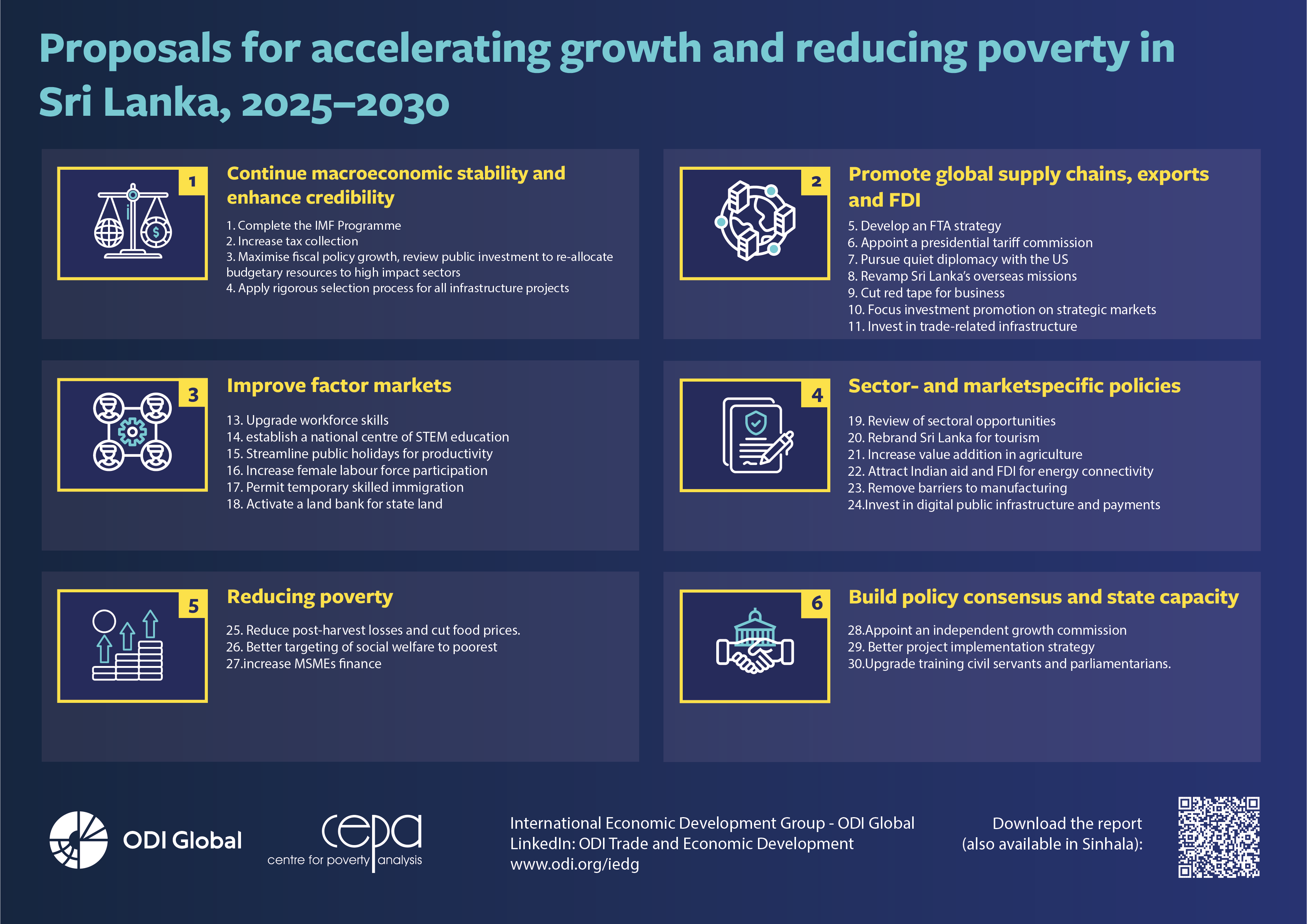
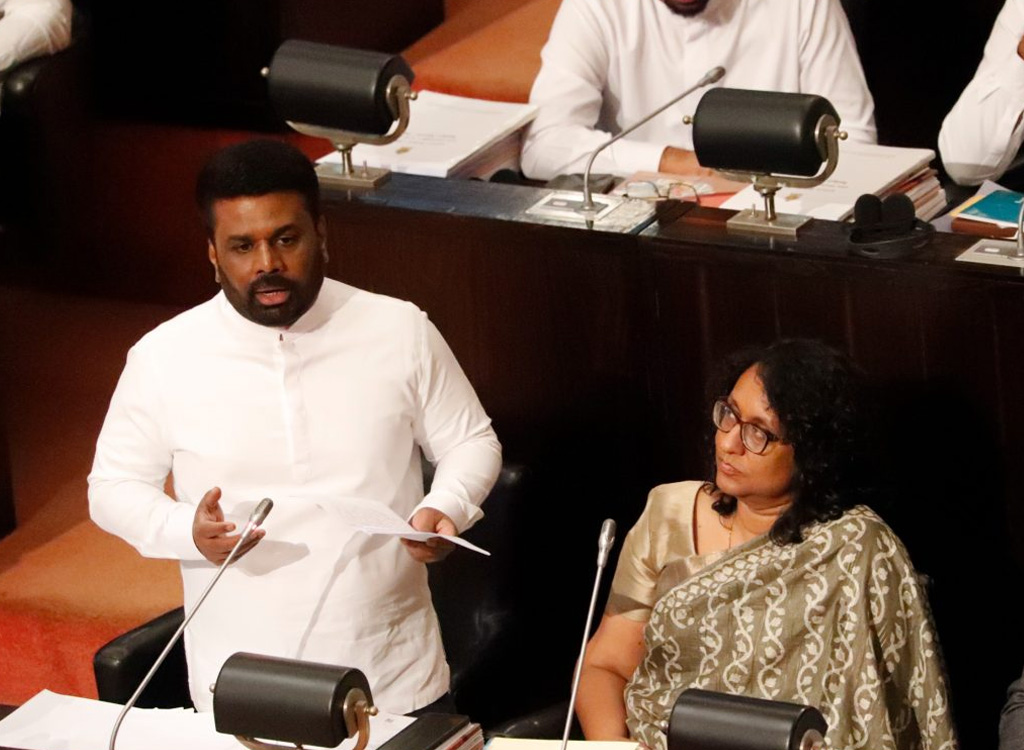

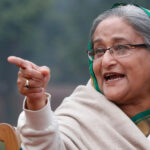
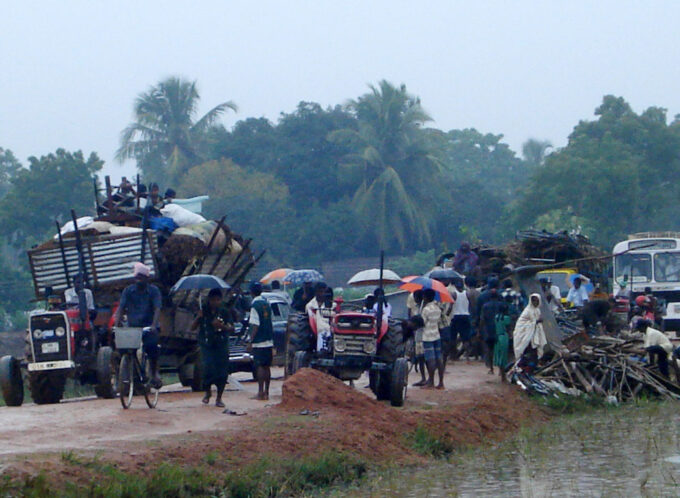

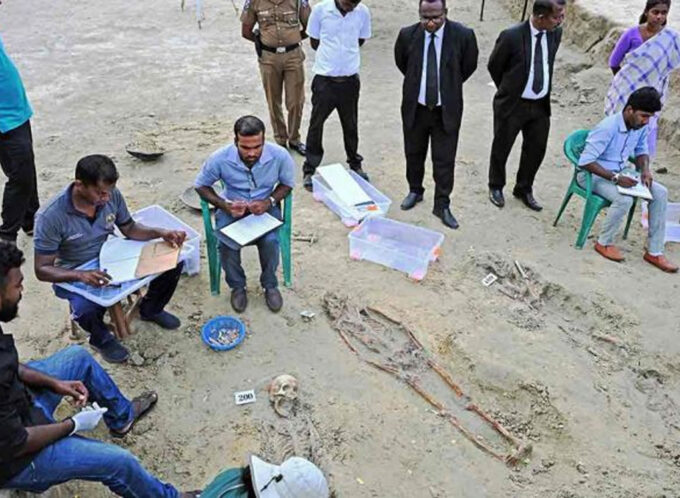





Leave a comment